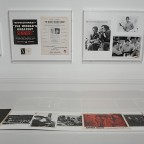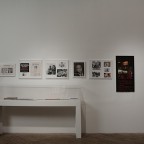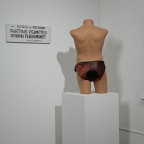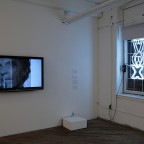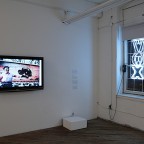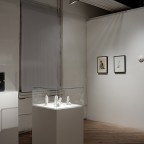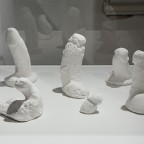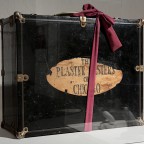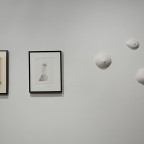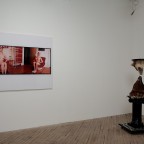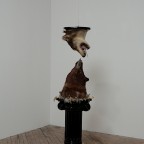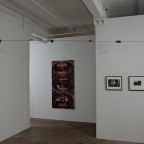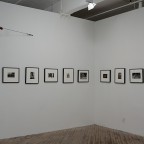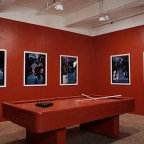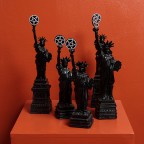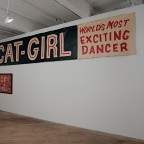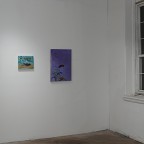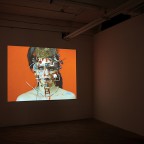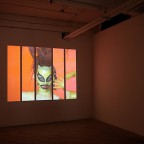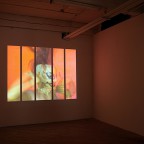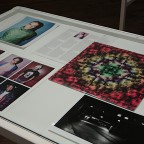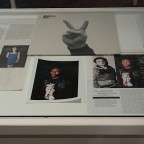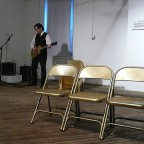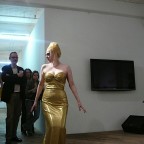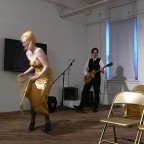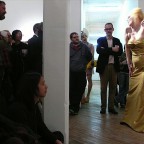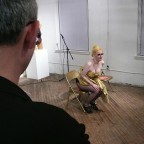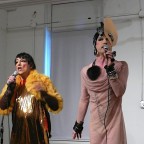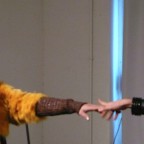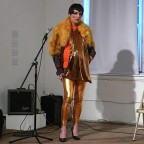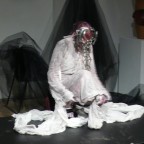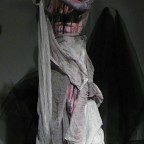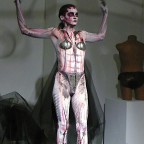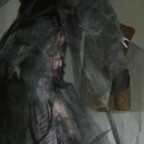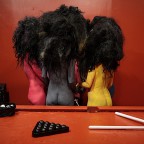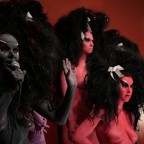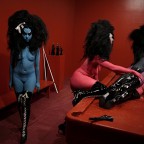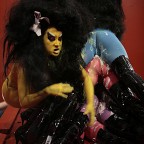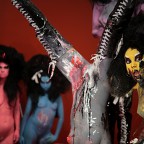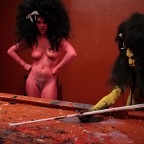
Vox Populi, Philadelphia
March 5 – May 2, 2010
PARTICIPANT INC, New York
May 9 – June 20, 2010
FEATURED ARTISTS
Charles Atlas, Alvin Baltrop, Genesis Breyer P-Orridge, Timothy Carey, Johanna Constantine, Marti Domination, Scott Ewalt, Georg Gatsas, Brandon Olson, Kembra Pfahler, Cynthia Plaster Caster, Tabboo! (Stephen Tashjian), Paul Thek
Vox Populi and PARTICIPANT INC are pleased to present Dead Flowers, a group exhibition based on the work of actor/director Timothy Carey. Carey became known as a pioneer of underground film due to his rarely seen 1962 film, The World’s Greatest Sinner. Screenings of this and other unreleased films by Carey, as well as a presentation of his ephemera and artifacts, will be organized in cooperation with Romeo Carey, the artist’s son and Executor of the Timothy Carey Estate. The exhibition draws themes from Carey’s unique correlation between his life and work, which sought to define what it means to be an artist through an uncompromising understanding of the meaning of success. Carey stated his rationale for declining his potentially lucrative mainstream break in order to preserve his integrity as an artist as follows:
“We slip. We bleed. Cassavetes taught me that. The truth is, I never really cared about conventional success. […] I was offered a spot in both The Godfather and The Godfather Part II. […] But I didn’t do either show, because if I had, I woulda been just like any other actor—out for the money.”
For both Carey and his longtime collaborator John Cassavetes, working the mainstream, mostly as secondary character actors, was just a means to their optimistic ends. All proceeds gathered on the inside served to fuel their independent projects—projects they resolutely considered art. Despite their inherent critique of middle-class America and society in general, neither figured themselves as part of an underground. They expressed ambivalence toward the distinctions of art that would necessarily alienate them from their desired audience, and seemed to imply no doubt that the public would comprehend their innovative approach as driven by economic necessities—not underground “style.”
“The underground,” whose definition, although generously borrowed by all manner of artistic practitioners, has been historically located in a cinematic field in which dominant factors of fundability and mainstream acceptability are more clearly understood. Underground actors and filmmakers serve as illuminating, persistent models of alternativity, as their gauge, or the object of their resistance, has remained somewhat transparent despite social, political, and economic shifts in the cultural terrain — meaning, underground film can remain underground, even if shown in museums. While some of us continue (perhaps out of respect) to use terms like “alternative space” or “underground film festival,” it’s not entirely clear anymore what, exactly, we mean. Since the variable meanings of “alternative,” like its illusive companion “the underground,” cannot be indisputably defined without temporal reference to a changing dominant culture, or located autonomously on their own terms, perhaps we can believe they may not cease to exist.
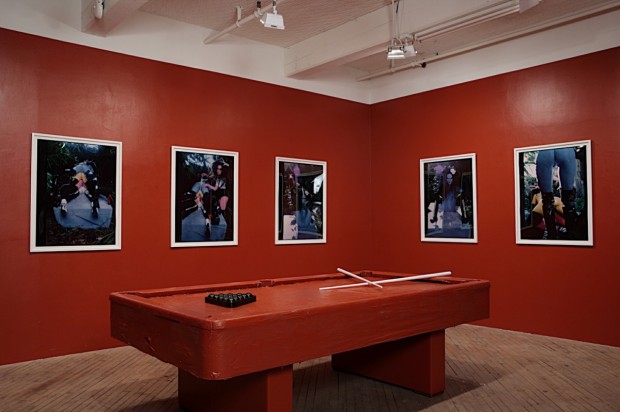
Dead Flowers brings together an intergenerational group of artists to address such shifting methodologies, ideals, aesthetics, and working models, as expressed by works from the late 60s and 70s (by Alvin Baltrop, Paul Thek, and Cynthia Plaster Caster), and contemporary works by subsequent generations of artists (including Kembra Pfahler, Scott Ewalt, Marti Domination, Georg Gatsas, and Johanna Constantine) and of course, both, as many of the artists’ work spans this entire period. The exhibition aims to address the relationship between alternative and mass culture by bringing together a small group of artists who have consistently aligned themselves with communities outside the mainstream, and entered the dominant fields of art and film, sporadically and to critical effect, as uncompromising proof that other ways of working are possible — inside and outside traditional expectations of the artist — to rewrite rules of artistic production through conscious economic and critical efficiency.
The exhibition will be accompanied by screenings of Timothy Carey’s films; a film program curated by Ed Halter of Light Industry; readings and performances by participating artists, and a publication.
This project has been supported by The Pew Center for Arts & Heritage through Philadelphia Exhibitions Initiative.
Vox Populi’s programs are possible through the generous support of individual contributors, our audience and Board of Directors, as well as the following funders: Philadelphia Cultural Fund, Pennsylvania Council on the Arts, The Andy Warhol Foundation for the Visual Arts, The William Penn Foundation, Philadelphia Exhibitions Initiative, The Knight Foundation, Samuel P. Mandell Foundation, Samuel S. Fels Fund, Dolfinger McMahon Foundation, The Barra Foundation, and Google.
PARTICIPANT INC’s exhibitions are made possible with public funds from the New York State Council on the Arts, a state agency.
PARTICIPANT INC receives generous support from the Harriett Ames Charitable Trust; Bloomberg; The Brown Foundation, Inc. of Houston; Foundation 20 21; Gesso Foundation; Peter Norton Family Foundation; The Andy Warhol Foundation for the Visual Arts; an anonymous donor of the Community Foundation of Abilene; FRIENDS of PARTICIPANT INC and numerous individuals; and Materials for the Arts, NYC Department of Cultural Affairs/NYC Department of Sanitation/NYC Department of Education.


